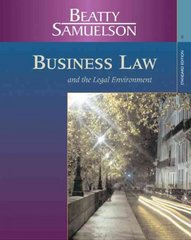Question
The value of Australian imports is: Select one: a.added to exports, when calculating GDP, because imports reflect spending by Australians. b.subtracted from exports, when calculating
The value of Australian imports is:
Select one:
a.added to exports, when calculating GDP, because imports reflect spending by Australians.
b.subtracted from exports, when calculating GDP, because imports do not involve spending by Australians.
c.subtracted from exports, when calculating GDP, because imports do not involve production in Australia.
d.added to exports, when calculating GDP, because imports do not involve production in Australia.
'Value added' refers to:
Select one:
a.any increase in GDP that has been adjusted for adverse environmental effects.
b.the excess of a country's exports over its imports.
c.the excess of gross investment over net investment.
d.the difference between the value of a firm's output and the value of inputs it has purchased from others.
Part-time workers are counted as:
Select one:
a.unemployed and, therefore, the official unemployment rate tends to overstate the level of unemployment.
b.unemployed and, therefore, the official unemployment rate tends to understate the level of unemployment.
c.fully employed and, therefore, the official unemployment rate tends to overstate the level of unemployment.
d.fully employed and, therefore, the official unemployment rate tends to understate the level of unemployment.
Which of the following will help reduce structural unemployment?
Select one:
a.Government launches new infrastructure project which creates new jobs.
b.Government offers subsidies to reduce the cost of retraining for unemployed workers.
c.Government offers incentives for people to join the workforce.
d.Government launches new online platform to speed up job matching process.
Unanticipated inflation:
Select one:
a.leaves fixed-income groups worse off.
b.increases the real value of savings.
c.increases the purchasing power of the dollar.
d.benefits creditors at the expense of debtors.
Menu costs of inflation refer to the:
Select one:
a.difficulty of interpreting the price signals in an inflationary environment.
b.unintended changes in taxes caused by inflation.
c.arbitrary redistribution of wealth from one group to another.
d.costs of updating prices.
When money is used as a means to hold wealth, it serves as:
Select one:
a.an unit of account.
b.an exchange rate.
c.a store of value.
d.a medium of exchange.
An open market sale of securities (bonds) by the RBA results in _______________ the money supply and ________________ in the interest rate.
Select one:
a.an increase; a decrease
b.an increase; an increase
c.a decrease; a decrease
d.a decrease; an increase
The following statements relate to aggregate supply and inflation. Select the statement which is FALSE.
Select one:
a.In the short run, a change in output has an effect on inflation.
b.In the long run, there are no output gaps.
c.In the short run, current inflation depends on inflation in the previous time period.
d.In the long run, output does not depend on the level of inflation.
The speed at which an economy returns to potential output (Y*) following an adverse inflation shock depends on:
Select one:
a.a central bank's target inflation rate.
b.a central bank's target real interest rate.
c.the level of potential output.
d.the public's expectations of how a central bank will act.
The steeper slope of the Central Bank's policy reaction function shows:
Select one:
a.the Bank is more aggressive in tackling inflation.
b.the Bank is more aggressive in tackling output gaps.
c.higher base interest rate.
d.higher inflation target.
The delay between the date a policy change is needed and the date it is implemented is called the:
Select one:
a.outside lag.
b.inside lag.
c.recessionary policy.
d.expansionary policy.
If average labour productivity decreases, real GDP per person:
Select one:
a.increases.
b.decreases.
c.remains constant .
d.may increase or decrease, depending on the change in the share of population employed.
Physical capital includes all of the following EXCEPT:
Select one:
a.land.
b.buildings.
c.capital equipment.
d.financial assets.
Which of the following is NOT subject to diminishing returns
Select one:
a.Labour.
b.Technology.
c.Capital.
d.Human capital.
Step by Step Solution
There are 3 Steps involved in it
Step: 1

Get Instant Access to Expert-Tailored Solutions
See step-by-step solutions with expert insights and AI powered tools for academic success
Step: 2

Step: 3

Ace Your Homework with AI
Get the answers you need in no time with our AI-driven, step-by-step assistance
Get Started


